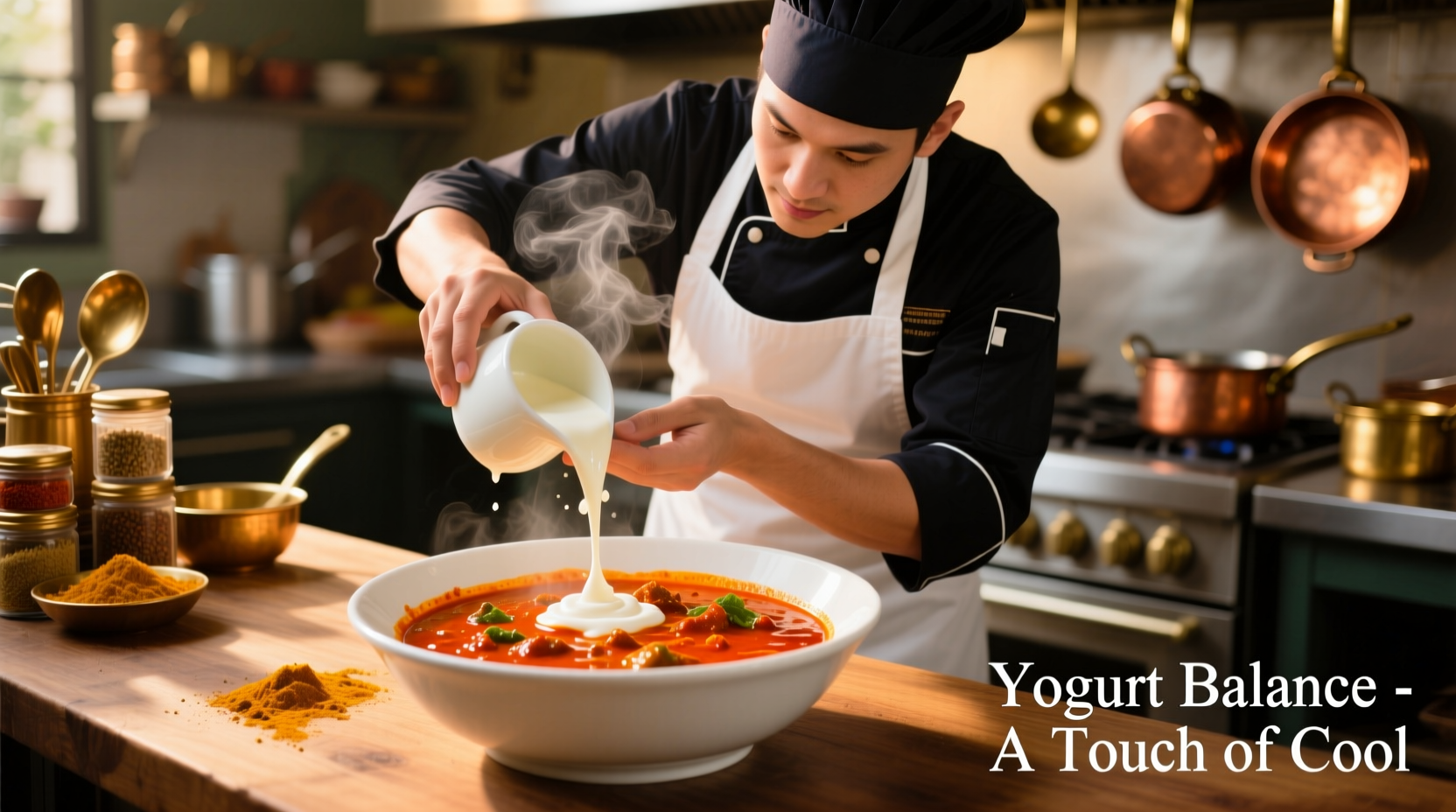Ever bitten into a dish only to feel your mouth ignite with unexpected heat? You're not alone. According to a USDA food safety survey, 68% of home cooks have accidentally over-spiced a meal. The good news: with the right techniques, you can rescue even the spiciest disaster in minutes. As a chef who's worked with chili varieties from habaneros to ghost peppers, I've developed a science-backed approach that actually works—no more guessing or wasted ingredients.
The Science Behind Spiciness: Why Your Fix Matters
Spiciness comes primarily from capsaicin, the compound in chili peppers that triggers heat receptors. Understanding capsaicin's properties is crucial because it's fat-soluble and alcohol-soluble but not water-soluble. This explains why drinking water often makes spicy food feel hotter—it spreads the capsaicin without neutralizing it.
Food scientists at Cornell University have demonstrated that dairy products work best for immediate relief because casein proteins bind to capsaicin molecules, effectively washing them away from pain receptors. For non-dairy solutions, understanding the pH balance and fat content of your dish determines which method will be most effective.

Rescue Methods by Dish Type
Not all spicy disasters are created equal. The right fix depends on your specific dish. Here's how to approach different food categories:
For Soups, Stews, and Broths
When your soup has become a five-alarm fire, try these steps:
- Add 1/4 cup of full-fat coconut milk or cream per quart of soup—stir gently to incorporate
- For immediate cooling, stir in 2 tablespoons of plain yogurt or sour cream per serving
- Dilute with additional broth or tomato base (1/2 cup at a time)
- Add a small potato (diced) to absorb excess heat as it simmers
For Curries and Sauces
Thick, concentrated sauces require different tactics:
- Mix in 1-2 tablespoons of nut butter (cashew or almond) to create emulsion
- Add a splash of tamarind paste (1 teaspoon) for balanced acidity
- Incorporate 1/4 cup of mango chutney for sweet counterbalance
- Stir in coconut cream instead of milk for richer integration
For Rice and Grain Dishes
When your pilaf packs too much punch:
- Serve immediately with plain steamed rice (1:1 ratio of new to spicy rice)
- Add a dollop of raita (yogurt with cucumber) directly on top
- Mix in additional cooked grains with a neutral flavor
- Pair with cooling side dishes like cucumber salad
| Method | Best For | Time to Work | Flavor Impact |
|---|---|---|---|
| Dairy (yogurt, milk) | Indian, Mexican dishes | Immediate | Mild creaminess |
| Acid (lemon, vinegar) | Asian, hot sauces | 2-3 minutes | Bright, tangy |
| Sweet (sugar, honey) | Thai, barbecue | 3-5 minutes | Sweet balance |
| Fat (coconut, oil) | Curries, stews | 5-7 minutes | Richer texture |
What NOT to Do: Common Mistakes
Many popular "hacks" actually make spicy food worse. Food safety experts warn against these counterproductive approaches:
- Adding more heat—some suggest balancing with more spice, but this creates unpredictable results
- Using ice water—causes ingredients to seize and can ruin texture
- Over-diluting—adding too much liquid waters down all flavors, not just heat
- Skipping the taste test—always test after each adjustment to avoid overcorrection
Professional kitchens follow the "one element at a time" rule when fixing spiciness. According to the Culinary Institute of America's flavor balancing guidelines, introducing multiple counteragents simultaneously makes it impossible to determine what's working.
Preventing Future Spicy Disasters
The best solution is avoiding the problem altogether. Implement these professional techniques:
- Toast whole spices before grinding—they release heat gradually
- Remove chili seeds and membranes (where 80% of capsaicin resides)
- Build heat incrementally—add 1/4 of your planned spice, then taste
- Use a spice scale for precise measurements (1/8 teaspoon makes a difference)
- Keep a "heat journal" noting which chilies work for your palate
Remember that spiciness intensifies as dishes sit. A curry that tastes perfect when hot will often become significantly spicier when cooled and reheated. Always under-spice slightly when cooking for later consumption.
Special Considerations for Dietary Restrictions
For those avoiding dairy or sugar, these alternatives work effectively:
- Vegan option: Cashew cream (soak 1 cup cashews in hot water for 15 minutes, then blend with 1/2 cup water)
- Sugar-free option: Roasted vegetable purees (cauliflower or sweet potato) add natural sweetness without sugar
- Low-fat option: Dilute with additional broth while adding a small amount of cornstarch slurry to maintain texture
Research from the USDA National Agricultural Library shows that roasting vegetables like carrots or beets before pureeing enhances their natural sweetness, providing effective heat balance without added sugars.
When to Start Over
Sometimes, the best solution is beginning anew. Consider restarting if:
- You've added multiple counteragents and the flavor profile is compromised
- The dish has been overcooked while attempting fixes
- You've used potentially unsafe methods (like excessive sugar that could burn)
Professional chefs follow the 30% rule: if you've added counteragents equal to 30% or more of your original recipe volume, the dish's integrity is likely compromised. It's better to save the base ingredients and start fresh with proper measurements.











 浙公网安备
33010002000092号
浙公网安备
33010002000092号 浙B2-20120091-4
浙B2-20120091-4